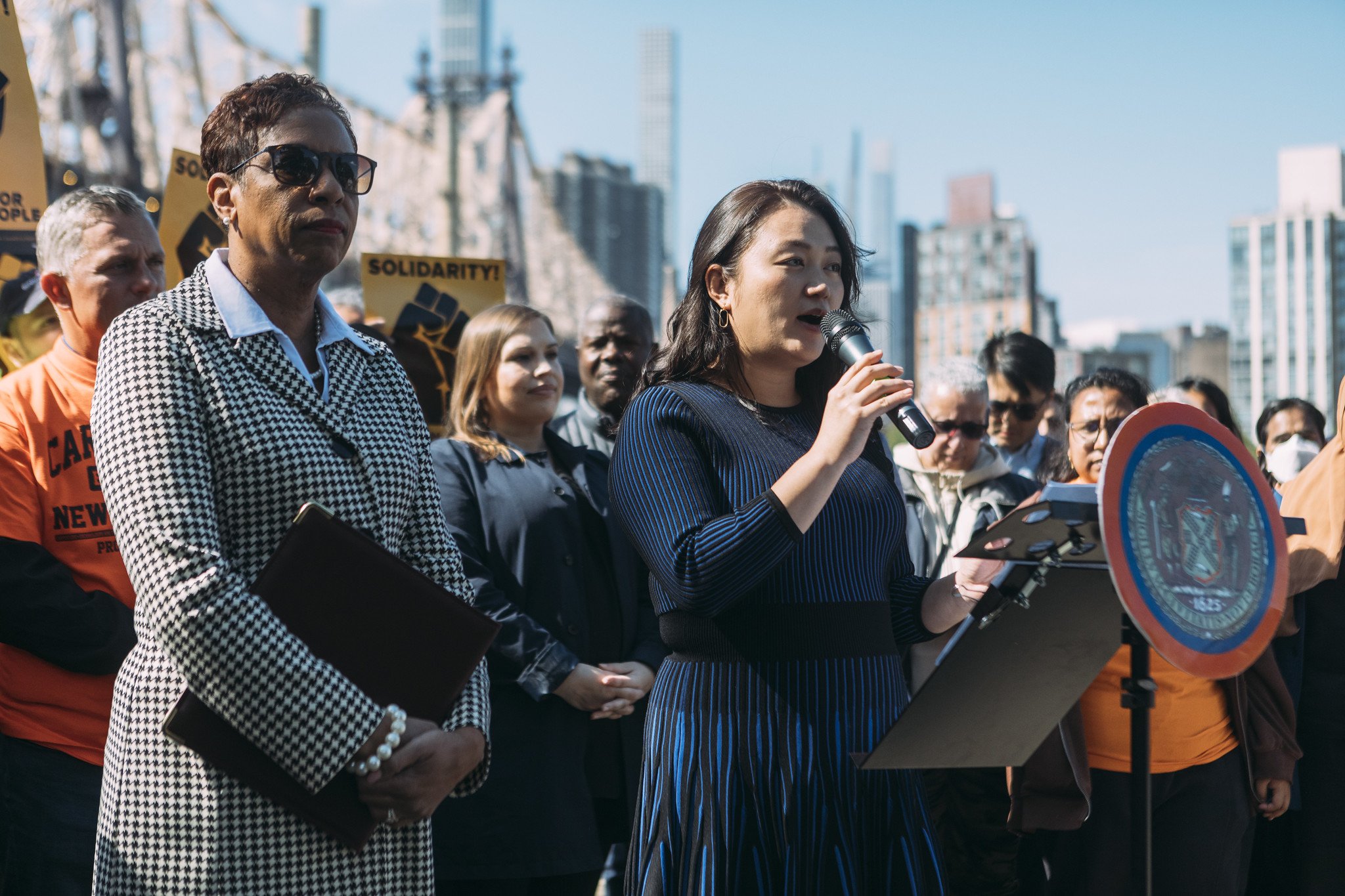City launches massive Long Island City rezoning effort
/City Councilmember Julie Won, Speaker Adrienne Adams and officials in the Adams administration announced on Tuesday several new neighborhood planning studies, one of which is expected to culminate in a massive rezoning proposal for Long Island City. Photo by Emil Cohen/NYC Council Media Unit
By Jacob Kaye
A year ago this week, City Councilmember Julie Won was in the midst of a tense battle over Innovation QNS, a massive, five-block, $2 billion development that was eventually approved by the council after a drawn out fight.
The project had stoked tensions throughout the Western Queens neighborhood, and everyone from local residents to the mayor had begun to declare whether or not they supported Innovation QNS.
Though Won would come around to supporting the project after its developers promised a number of changes to the proposal, she said the project and its public approval process had brought forth a need to change how rezonings in her district were done.
In that vein, Won, City Council Speaker Adrienne Adams, local community leaders and top officials in the Adams administration unveiled on Tuesday two separate but connected neighborhood studies, each of which aims to result in “community-driven land use changes,” according to the officials.
“Comprehensive planning allows us to work toward common goals and community consensus, as opposed to spot zonings that have been hurtful and divisive for so long in our community,” Won said on Tuesday.
Won, who represents parts of Long Island City, Astoria, Sunnyside and Woodside, said that the Innovation QNS rezoning – her first major rezoning as a councilmember – played a large role in the announcement of the two neighborhood studies.
“Either I do this comprehensive neighborhood planning for large chunks of the district that are hotspots or popular areas for development, or I die by 1,000 cuts,” the councilmember told the Eagle. “Because then I will have to go through all of these individual rezonings that are extremely painful.”
While she said she hopes the planning initiatives result in more affordable housing for the area’s residents, more job opportunities and other economic benefits, it’s a process that will also allow for residents to feel more involved in the future of the neighborhood, she said.
“The two comprehensive community planning initiatives that we're launching today will allow residents to proactively share their vision for new housing, jobs, investments in their neighborhood, such as public transit, affordable housing, open space, sewage, infrastructure and more,” Won said. “While we're proposing two holistic community planning processes, they have the same goal – both want to ensure that our neighborhoods are in the forefront of the planning process.”
As part of each of the planning efforts, residents will be asked about what type improvements they want to see made to their neighborhoods, including improved parks, schools, public transportation and public infrastructure.
On Tuesday, the city officials introduced the Long Island City Neighborhood Study – a project they’ve dubbed One Long Island City.
The planning study will be led by the New York City Department of City Planning and funded by the mayor’s office.
Covering the area from the East River and Gantry Plaza State Park to Court Square and 23rd Street, the project aims to create “a vision for one holistic Long Island City neighborhood,” an area that has seen massive growth in some parts and disinvestment in others over the past several decades.
“This planning process will aim to unite these disparate areas to create a vision for one holistic Long Island City neighborhood,” Won said.
Divided by the Queensboro Bridge, Long Island City has seen more development more on one side than the other. South of the bridge, luxury apartment buildings have been built in rapid succession along the neighborhood’s waterfront, making Long Island City, by some measures, one of the most expensive neighborhoods in the borough.
But north of the bridge is Queensbridge Houses, the largest public housing complex in the U.S. The surrounding neighborhood hasn’t seen the same investment the rest of Long Island City has.
“Too often, in this particular community, we are not included in the actual planning,” said Corinne Haynes, the president of the Queensbridge Houses tenant association. “We are notified once the plan is derived.”
“I'm grateful for this opportunity,” Haynes said of One Long Island City.
One Long Island City will result in a rezoning proposal that will be voted upon by the City Council.
Won said that she expects the proposal to be complete before the end of her upcoming council term in December 2025.
Additionally, Won announced on Tuesday “Heart of District 26,” a dual study of the Northern Boulevard and Roosevelt Avenue corridors that run through the district.
The study area will encompass Roosevelt Avenue from Queens Boulevard to the Brooklyn Queens Expressway, and Northern Boulevard from Queens Boulevard to the Brooklyn Queens Expressway.
Funded by the speaker’s office, the study area spans several neighborhoods, and includes parts of Astoria, Sunnyside and Woodside.
Assemblymember Steven Raga, who represents a portion of the study area, said that most important to each of the studies announced this week are their public participation portions.
“This is a project that we can work on together, early in the process, so that we can't just walk the street later on and say, ‘Oh, when did this come, I didn't know this was coming up,’” he said. “We know as a community, that our government is taking proactive steps together to include us, to include the leadership, and that is a very small step, but a step in the right direction.”
Over the next year, the city will host a number of public meetings and other outreach events concerning the projects.
The first public meeting for One Long Island City will be held on Nov. 6, from 6:30 to 8:30 p.m. at Culture Lab.
The first public meeting for Heart of District 26 will be held on Nov. 2 from 6:30 to 8:30 at Legal Outreach.




